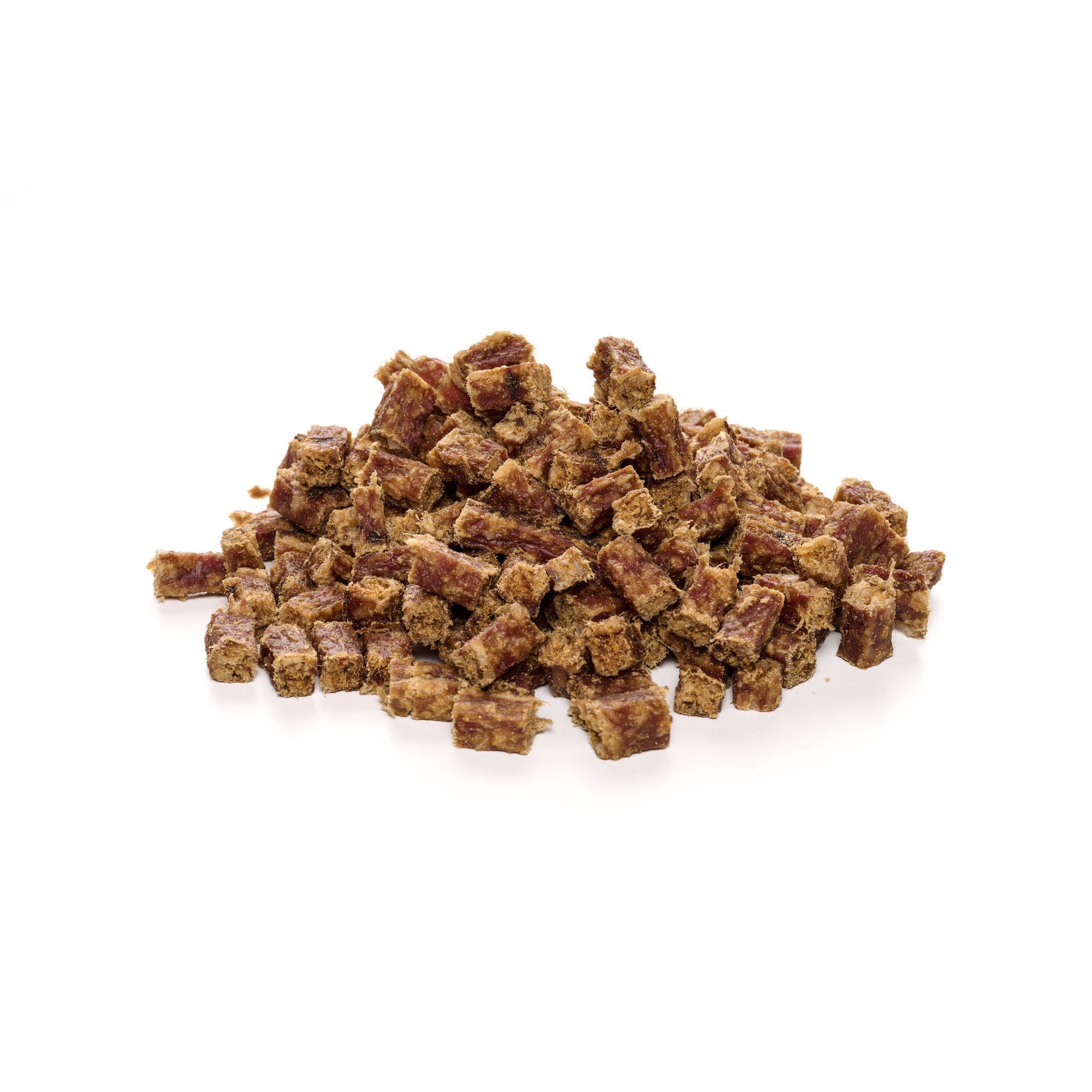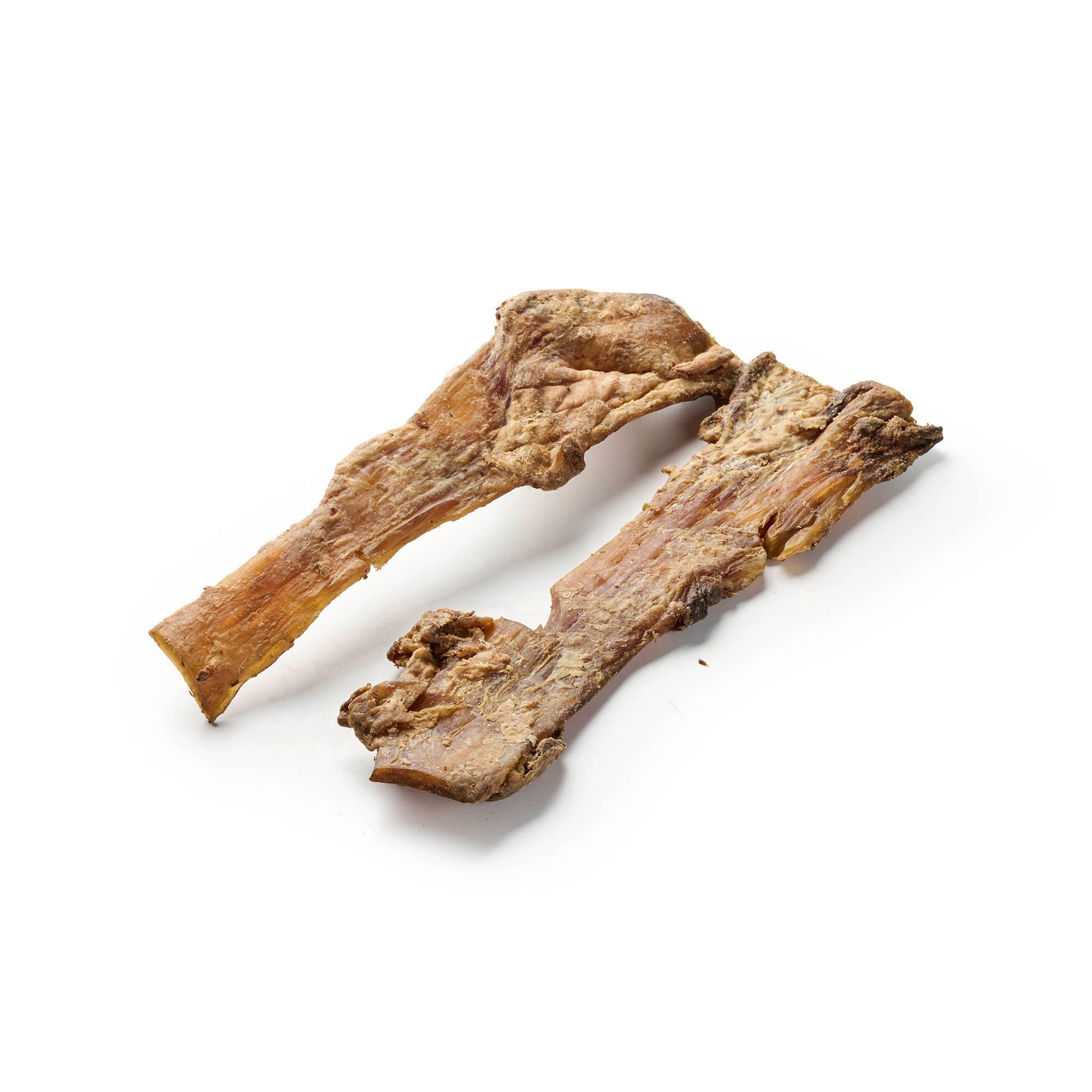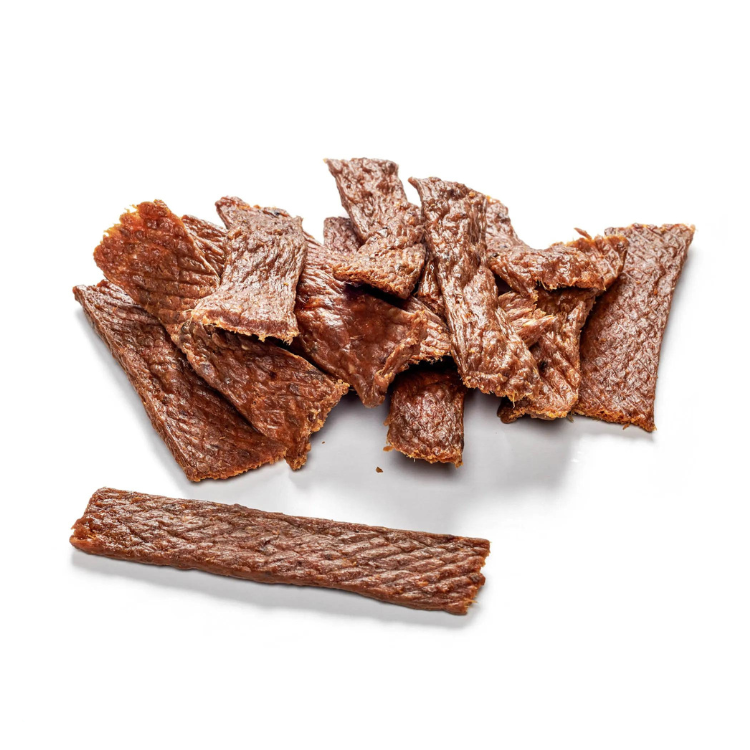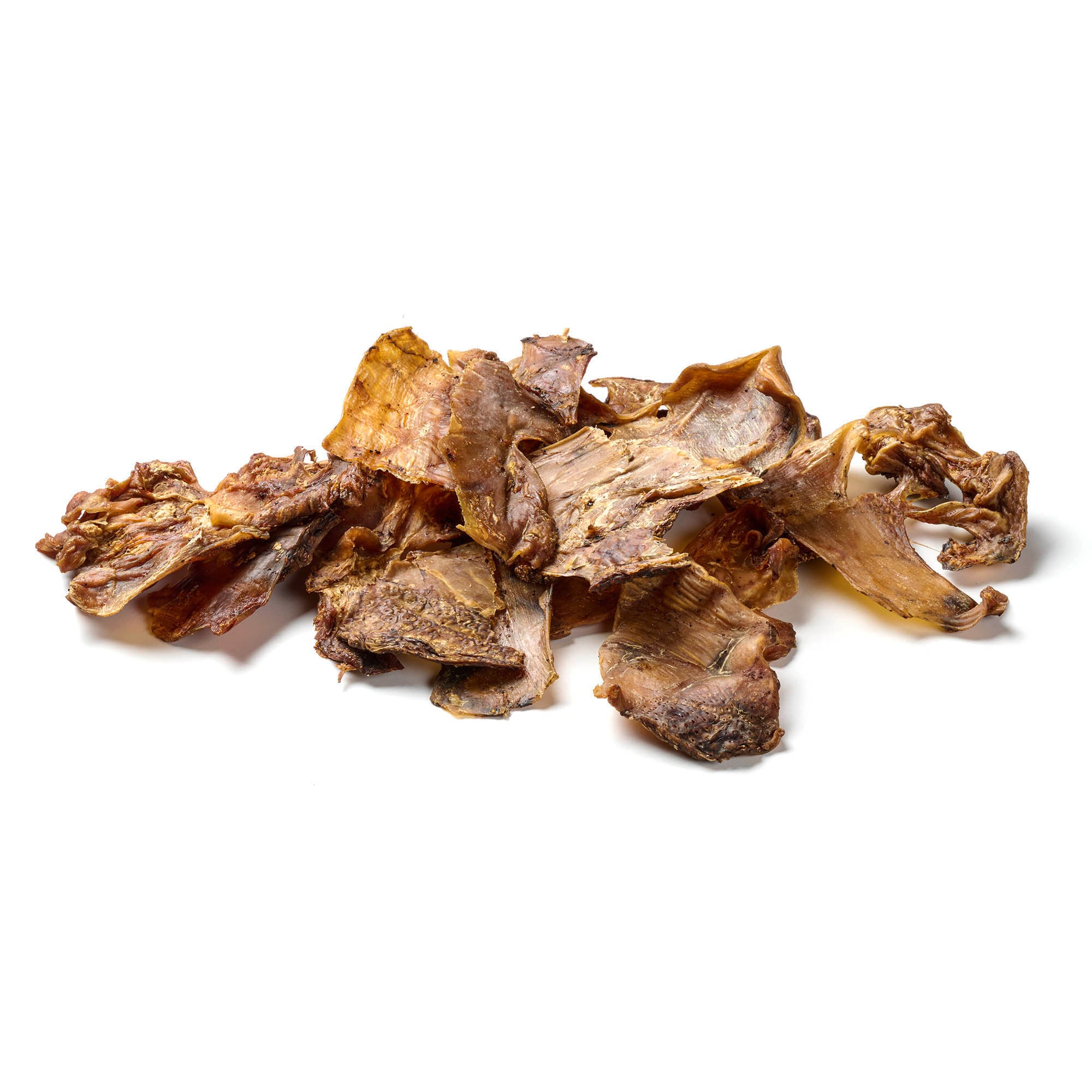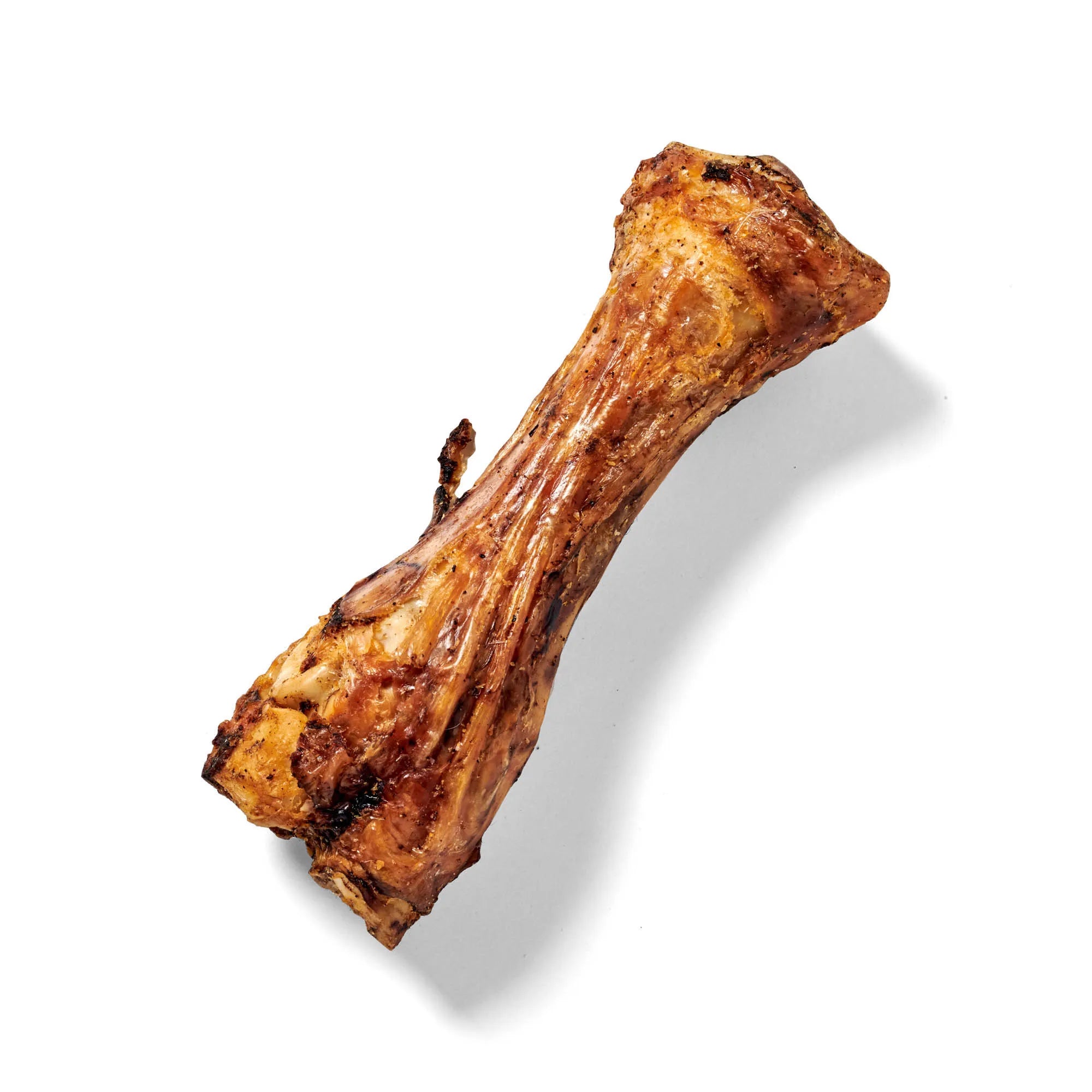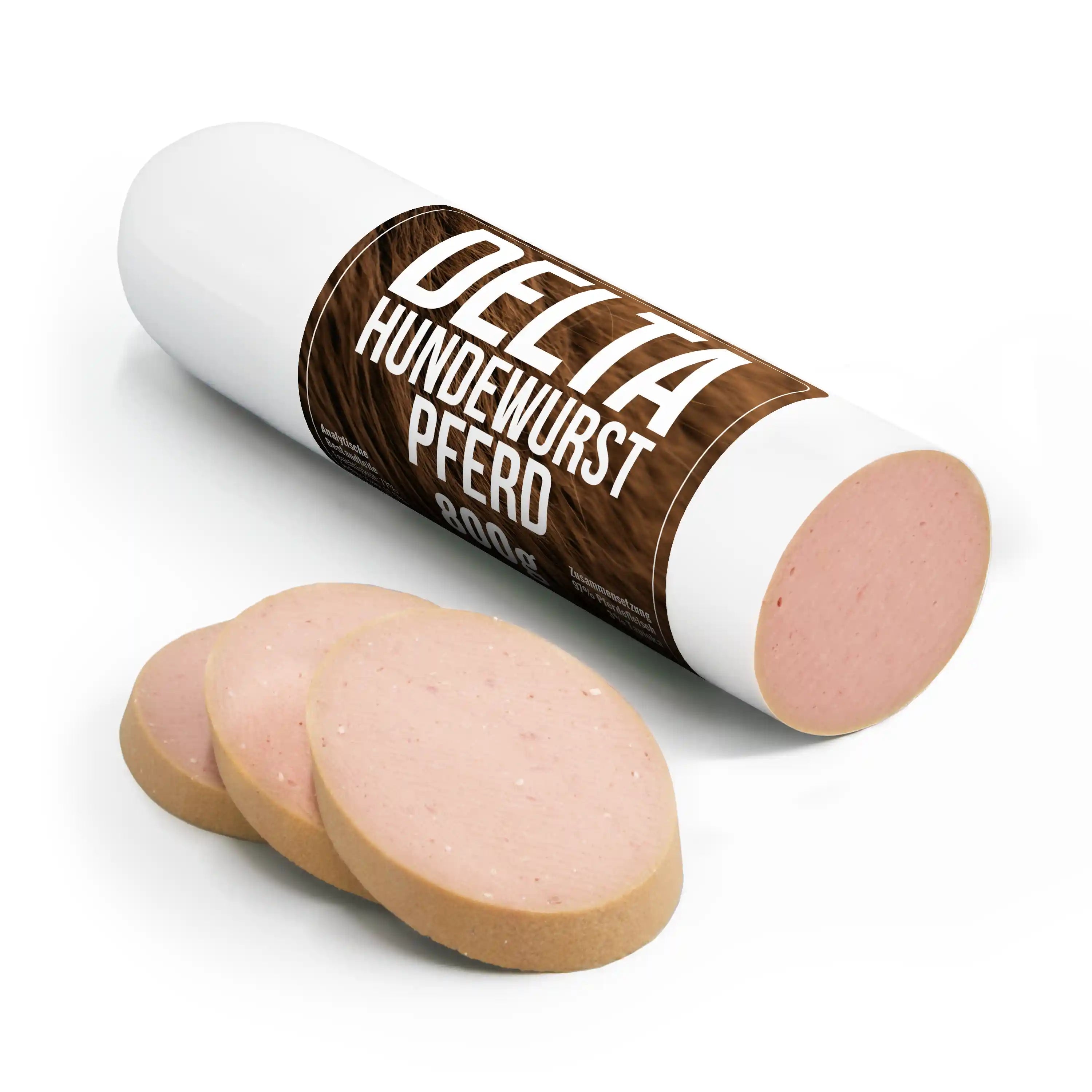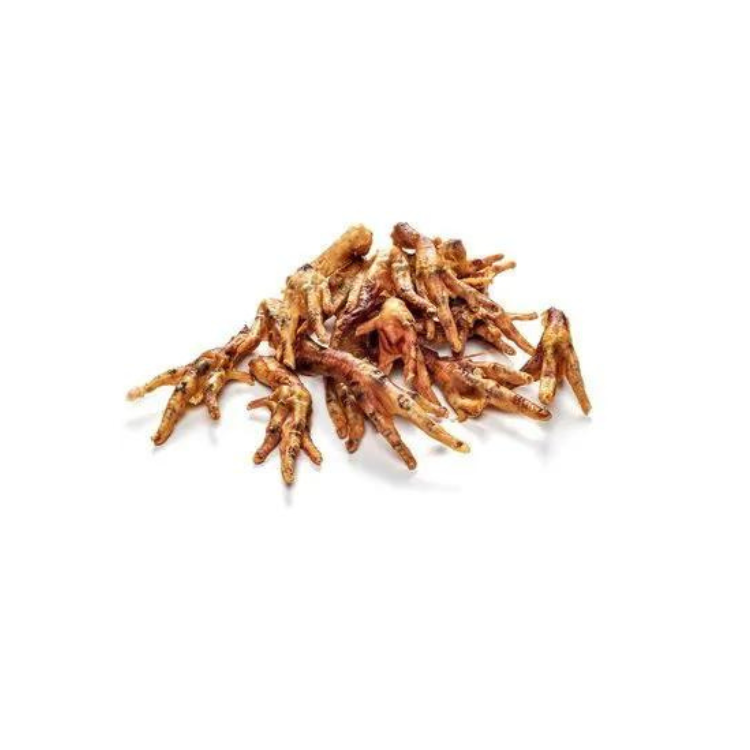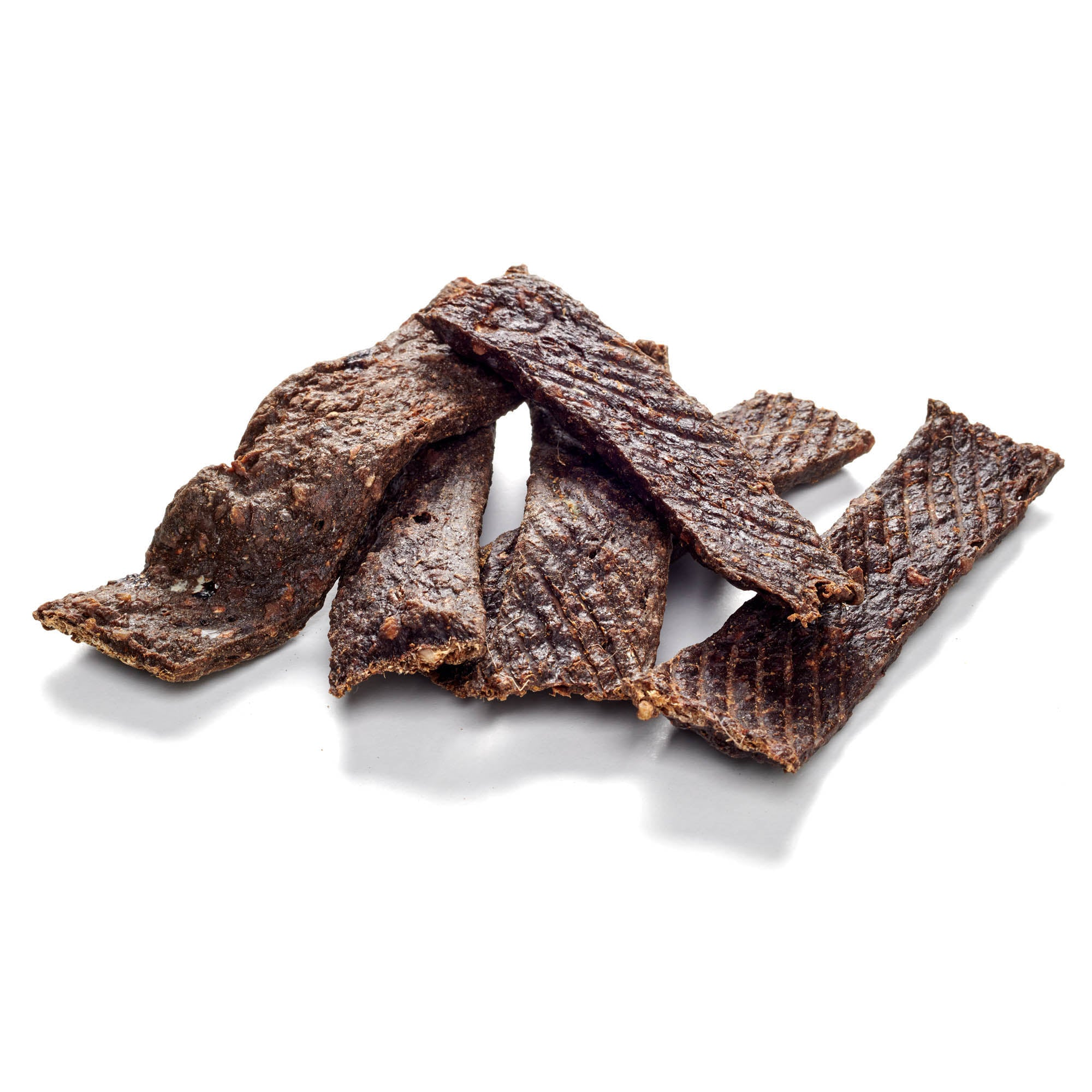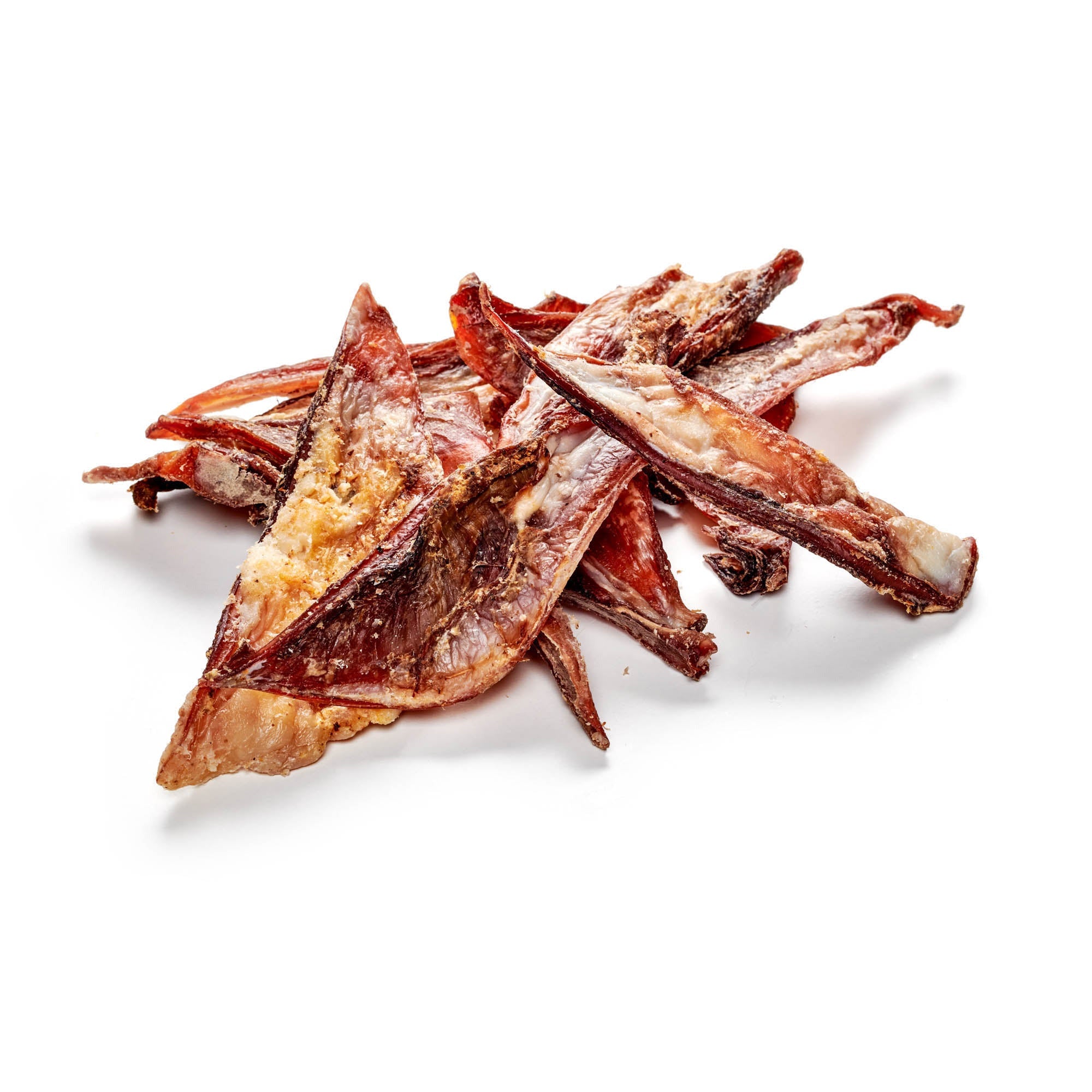
Chesapeake Bay Retrievers
Share
The Chesapeake Bay Retriever is an impressive hunting dog breed that is aimed at experienced dog owners. With a shoulder height of up to 66 cm, it is one of the largest retriever breeds and is particularly popular in the USA. In 1964, it was even named the official state dog of Maryland. Dog lovers affectionately know it as the "Chesapeake" or "Chessie".
Contents: Chesapeake Bay Retriever
- profile
- Special features
- Nutrition
- Health and care
- Origin & History
- The right accessories
- Conclusion
Pamper your dog with our chew products!
Chesapeake Bay Retriever - Profile
- Character: Intelligent, loyal, brave
- Size: Medium to large
- Height: 53-66 cm
- Weight: 25-36 kg
- Life expectancy: 10-12 years
- Coat type: Dense, water-repellent
- Colour: Shades of sedge and deadgrass
- FCI Group: Retrievers, Flushing Dogs, Water Dogs
Chesapeake Bay Retriever - Special Characteristics
The Chesapeake Bay Retriever was specifically bred as a retriever for duck and goose hunting in the cold North American swamps and waters. It also has the task of defending the house and farm and protecting the family. This makes it a brave and resilient dog.
Weighing up to 36 kg, it is a powerful and muscular dog. Its coat was bred for camouflage in the undergrowth and can range in various solid colors from dark brown to straw-colored, including light red tones (sedge) and gray-brown (tan) variants.
What is striking is its wavy, short coat, which extends from the neck to the tail and is no longer than one and a half centimeters. The coat is smooth on the stomach and legs. The Chesapeake Bay Retriever's dense, oily undercoat protects its skin from moisture and makes it weatherproof, allowing it to wade through icy water for hours.
The Chesapeake Bay Retriever is eager to learn, intelligent and willing to work, but due to its hunting nature it is not necessarily the ideal family dog. It needs both physical and mental challenges.
Consistent training and behavior are essential to get the best out of this breed. The Chesapeake Bay Retriever can be a good-natured playmate for children and develops a close bond with its owner, but is often reserved around strangers.
If you are considering owning a Chesapeake Bay Retriever, you must remember that he needs a clear hierarchy and a balance for his stamina and hunting instinct. The right activity can be hunting, rescue work, agility or dummy retrieving. Long walks are also important to meet his needs.
Chesapeake Bay Retriever - What should you consider when feeding them?
For puppies, it is important to use high-quality food with sufficient protein to promote healthy growth. For adult Chesapeake Bay Retrievers, the diet should be adjusted according to activity and energy needs, as this breed has higher energy requirements. Dog treats are allowed, but should be included in the total food amount.
The Chesapeake Bay Retriever's diet should consist of high-quality food that provides all the necessary nutrients, especially given its susceptibility to joint diseases. The calcium-phosphorus ratio in the food should also be taken into account to support bone and skeletal health. A high-quality and natural dog food will help ensure that the Chesapeake Bay Retriever is healthy, has a shiny coat and feels good overall.
Dog chews available for happy and satisfied four-legged friends!
Chesapeake Bay Retriever - Health and Care
The Chesapeake Bay Retriever's coat repels water very well due to its oily undercoat and dirt does not stick to it easily. Occasional washing with a mild dog shampoo is sufficient. Regular grooming mainly consists of removing loose hair with a brush to air out the oily undercoat.
The eyes and ears are sensitive areas that should be cleaned periodically to prevent infection. These checks can be done during brushing. After walking, the Chessie's paws should be cleaned to identify and treat any injuries.
Chesapeake Bay Retriever - Origin & History
The origin of the Chesapeake Bay Retriever dates back to 1807, when a ship ran aground in the Chesapeake Bay and two Newfoundland puppies were rescued on board. These dogs became native to the Bay and became indispensable hunting dogs, retrieving ducks and adapting to the harshest conditions.
Although these two Newfoundlands were never crossed with each other, they are considered to be the ancestors of today's Chesapeake Bay Retrievers. Over time, various breeds have been incorporated into the family tree, including Flat-Coated Retrievers , Curly-Coated Retrievers , Irish Water Spaniels , Setters, and Coonhounds.
In 1978, the Chesapeake Bay Retriever was first registered with the American Kennel Club, although the breed standard was established in 1885. This dog has a long history of adapting to the harsh conditions of the Chesapeake Bay and has been an indispensable partner in duck hunting and other tasks.
Chesapeake Bay Retriever - The right accessories
The Chesapeake Bay Retriever's basic equipment includes a collar or harness and a leash. A comfortable dog bed is also important. Food and water bowls are a must. Every dog enjoys different toys, and since the Chesapeake is a large dog, a dog transport box for the car is a sensible purchase.
Grooming requires a brush, preferably a slicker brush, that reaches into the undercoat to remove dead hair and dirt.
To keep your Chessie happy, you need suitable work equipment that matches his intelligence and willingness to work. Dummies specifically for hunting dogs are ideal for retrieving training and serve various training purposes. Water dummies are suitable for retrieving in water, for example. A training diary can help you keep track of the work you do with your Chessie.
Chesapeake Bay Retriever – Conclusion
The Chesapeake Bay Retriever is a hardy and courageous hunting dog that can work in demanding environments. They require plenty of exercise and mental challenges, making them suitable for experienced dog owners or hunters. Their coats are easy to groom, and they are hardy and healthy. This breed requires consistent training and a clear hierarchy, but with the right leadership they will become loyal and protective family members.
Make your dog happy with our tasty chews!

